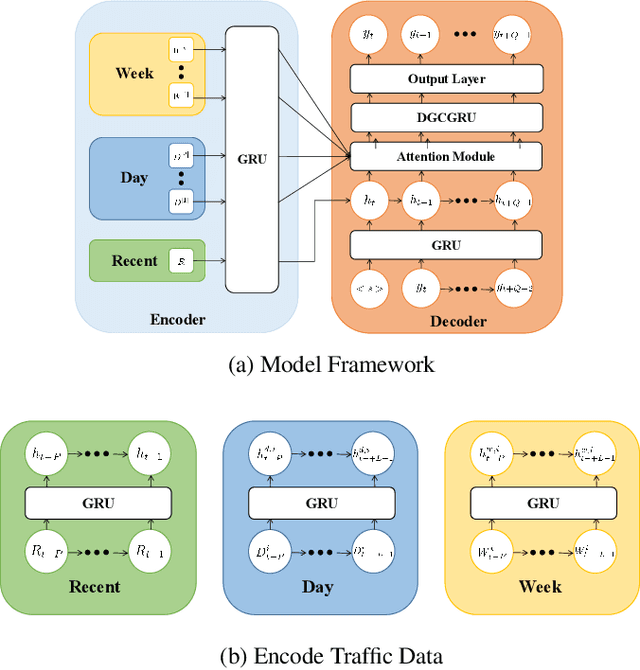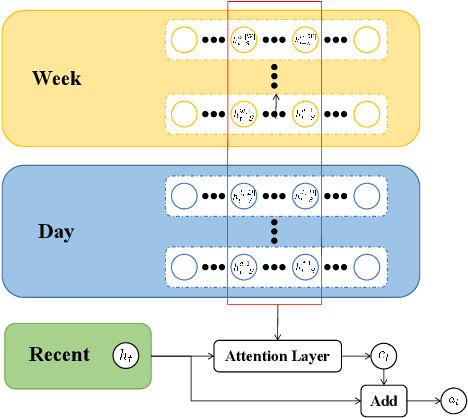Le Zhao
Learning Multi-Stage Pick-and-Place with a Legged Mobile Manipulator
Sep 04, 2025Abstract:Quadruped-based mobile manipulation presents significant challenges in robotics due to the diversity of required skills, the extended task horizon, and partial observability. After presenting a multi-stage pick-and-place task as a succinct yet sufficiently rich setup that captures key desiderata for quadruped-based mobile manipulation, we propose an approach that can train a visuo-motor policy entirely in simulation, and achieve nearly 80\% success in the real world. The policy efficiently performs search, approach, grasp, transport, and drop into actions, with emerged behaviors such as re-grasping and task chaining. We conduct an extensive set of real-world experiments with ablation studies highlighting key techniques for efficient training and effective sim-to-real transfer. Additional experiments demonstrate deployment across a variety of indoor and outdoor environments. Demo videos and additional resources are available on the project page: https://horizonrobotics.github.io/gail/SLIM.
IMNet: Interference-Aware Channel Knowledge Map Construction and Localization
Dec 02, 2024



Abstract:This paper presents a novel two-stage method for constructing channel knowledge maps (CKMs) specifically for A2G (Aerial-to-Ground) channels in the presence of non-cooperative interfering nodes (INs). We first estimate the interfering signal strength (ISS) at sampling locations based on total received signal strength measurements and the desired communication signal strength (DSS) map constructed with environmental topology. Next, an ISS map construction network (IMNet) is proposed, where a negative value correction module is included to enable precise reconstruction. Subsequently, we further execute signal-to-interference-plus-noise ratio map construction and IN localization. Simulation results demonstrate lower construction error of the proposed IMNet compared to baselines in the presence of interference.
Benchmarking Fish Dataset and Evaluation Metric in Keypoint Detection -- Towards Precise Fish Morphological Assessment in Aquaculture Breeding
May 21, 2024Abstract:Accurate phenotypic analysis in aquaculture breeding necessitates the quantification of subtle morphological phenotypes. Existing datasets suffer from limitations such as small scale, limited species coverage, and inadequate annotation of keypoints for measuring refined and complex morphological phenotypes of fish body parts. To address this gap, we introduce FishPhenoKey, a comprehensive dataset comprising 23,331 high-resolution images spanning six fish species. Notably, FishPhenoKey includes 22 phenotype-oriented annotations, enabling the capture of intricate morphological phenotypes. Motivated by the nuanced evaluation of these subtle morphologies, we also propose a new evaluation metric, Percentage of Measured Phenotype (PMP). It is designed to assess the accuracy of individual keypoint positions and is highly sensitive to the phenotypes measured using the corresponding keypoints. To enhance keypoint detection accuracy, we further propose a novel loss, Anatomically-Calibrated Regularization (ACR), that can be integrated into keypoint detection models, leveraging biological insights to refine keypoint localization. Our contributions set a new benchmark in fish phenotype analysis, addressing the challenges of precise morphological quantification and opening new avenues for research in sustainable aquaculture and genetic studies. Our dataset and code are available at https://github.com/WeizhenLiuBioinform/Fish-Phenotype-Detect.
Spatial-Temporal Graph Convolutional Gated Recurrent Network for Traffic Forecasting
Oct 06, 2022



Abstract:As an important part of intelligent transportation systems, traffic forecasting has attracted tremendous attention from academia and industry. Despite a lot of methods being proposed for traffic forecasting, it is still difficult to model complex spatial-temporal dependency. Temporal dependency includes short-term dependency and long-term dependency, and the latter is often overlooked. Spatial dependency can be divided into two parts: distance-based spatial dependency and hidden spatial dependency. To model complex spatial-temporal dependency, we propose a novel framework for traffic forecasting, named Spatial-Temporal Graph Convolutional Gated Recurrent Network (STGCGRN). We design an attention module to capture long-term dependency by mining periodic information in traffic data. We propose a Double Graph Convolution Gated Recurrent Unit (DGCGRU) to capture spatial dependency, which integrates graph convolutional network and GRU. The graph convolution part models distance-based spatial dependency with the distance-based predefined adjacency matrix and hidden spatial dependency with the self-adaptive adjacency matrix, respectively. Specially, we employ the multi-head mechanism to capture multiple hidden dependencies. In addition, the periodic pattern of each prediction node may be different, which is often ignored, resulting in mutual interference of periodic information among nodes when modeling spatial dependency. For this, we explore the architecture of model and improve the performance. Experiments on four datasets demonstrate the superior performance of our model.
The Nature of Novelty Detection
Oct 19, 2005



Abstract:Sentence level novelty detection aims at reducing redundant sentences from a sentence list. In the task, sentences appearing later in the list with no new meanings are eliminated. Aiming at a better accuracy for detecting redundancy, this paper reveals the nature of the novelty detection task currently overlooked by the Novelty community $-$ Novelty as a combination of the partial overlap (PO, two sentences sharing common facts) and complete overlap (CO, the first sentence covers all the facts of the second sentence) relations. By formalizing novelty detection as a combination of the two relations between sentences, new viewpoints toward techniques dealing with Novelty are proposed. Among the methods discussed, the similarity, overlap, pool and language modeling approaches are commonly used. Furthermore, a novel approach, selected pool method is provided, which is immediate following the nature of the task. Experimental results obtained on all the three currently available novelty datasets showed that selected pool is significantly better or no worse than the current methods. Knowledge about the nature of the task also affects the evaluation methodologies. We propose new evaluation measures for Novelty according to the nature of the task, as well as possible directions for future study.
 Add to Chrome
Add to Chrome Add to Firefox
Add to Firefox Add to Edge
Add to Edge